If you have water damage to your joists, you must take the time to repair them. The process of repairing floor joists can be difficult and tedious, but some steps make the job easier. We’ll go over how to repair floor joists with water damage below! The floor joists in your home are the foundation.
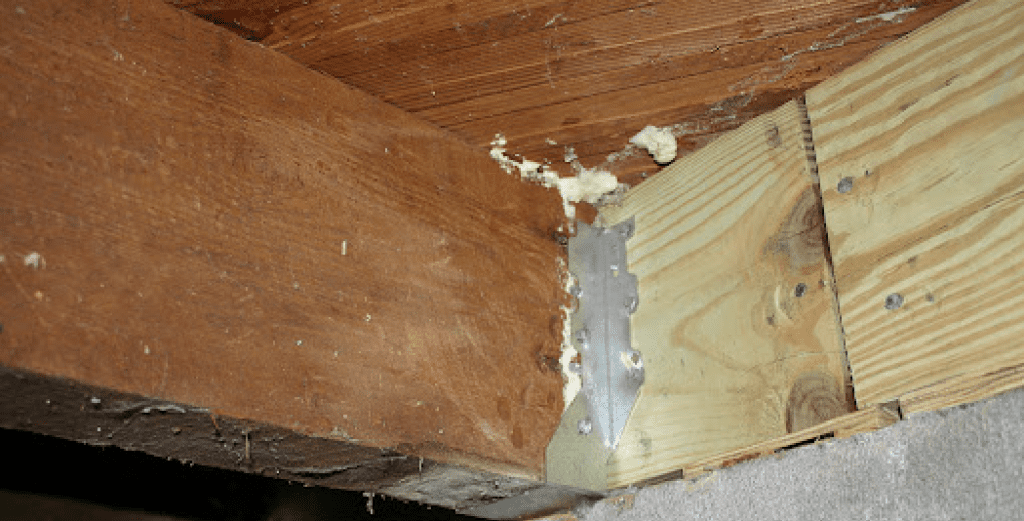
They support the weight of everything on top of them, and they can often be damaged by water damage over time. For example, if you find a leak in the pipe near a ceiling, it will eventually seep down to the bottom of your joist and cause rot or worse. If this happens, there is an easy way to fix it! This blog post will show you how to get rid of that pesky water damage before it gets any worse.
What Is Floor Joists?
Floor joists are the structural supports that run parallel to a building’s walls and extend from wall to wall, below the room floor, to carry the weight of the walls, floors, and roof above.
Floor joists are pieces of wood that go across your floor. They are usually installed perpendicular to the exterior wall studs. The ends of floor joists that don’t touch an exterior wall are supported by beams, girders, or bearing walls.
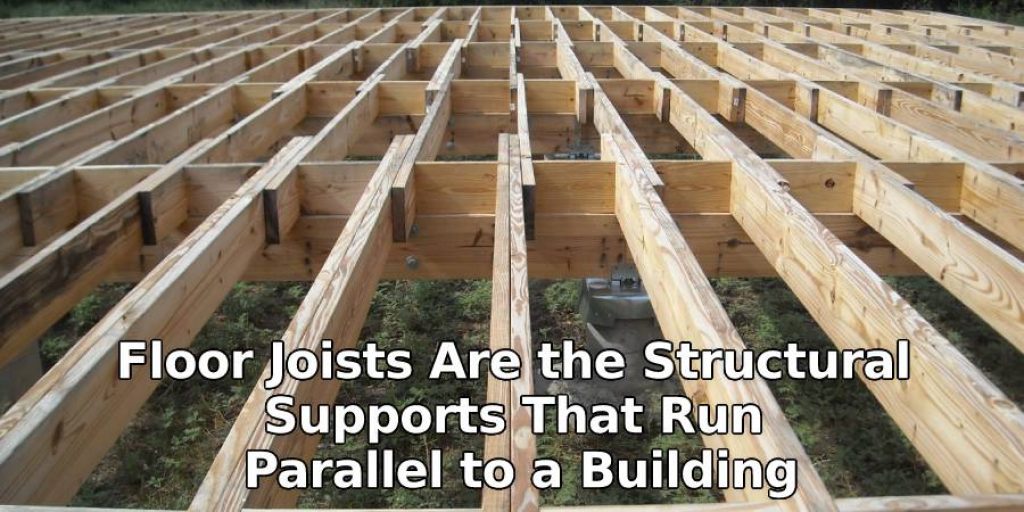
Materials & Supplies Needed:
- Safety glasses, dust mask, and work gloves
- Circular saw with a fresh blade
- Heavy-duty staple gun
- Hammer and Chisel
- Tape Measure & Level
Step By Step Guide on How to Repair Floor Joists With Water Damage
Step 1: Remove Standing Water from Wood
After you have determined that the floor joists have been damaged due to water, the first step is to remove as much standing water as possible. To do this, use a wet/dry vacuum or pump out the water using a sump pump. Once you have removed as much of the standing water as possible, you will need to dry out the joists.
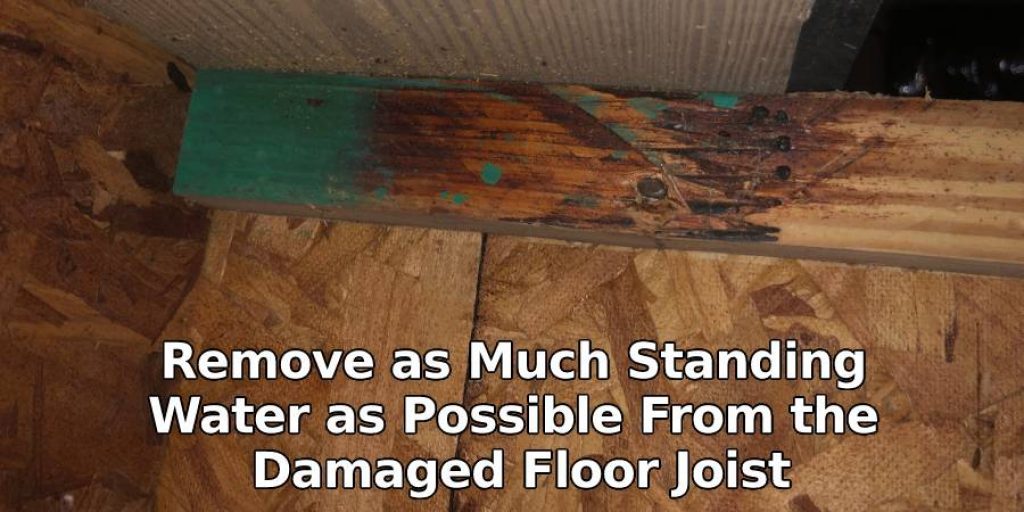
Step 2: Remove Building Materials
Once all of the water has been removed from the damaged floor joists, remove any previously wet insulation ors contaminated with mold or mildew. If insulation cannot be easily removed, leave it in place and cover it with 3-mil sheet plastic. Leave the plastic in place for at least 48 hours to prevent mold and mildew growth.
Step 3: Remove Debris
Once you have removed all of the water, wet building materials, insulation, and other debris from your floor joists, it is time to start drying out the joists themselves.
To do this, place dehumidifiers along the entire span of the floor joists. If possible, run 2-inch plastic sheeting below and above the affected floor joist to help increase airflow and speed up the drying process. Leave this in place for at least 24 hours.
Step 4: Replace Damaged Floor Joists
If your damaged joists are unsound, you can use salvaged joists to replace them. If the damaged area of the floor is extensive and not all of the joists need to be replaced, cut out and remove only the damaged portion of the joist.
Replacement joists should be made from pressure-treated lumber since untreated wood will not last as long under repeated exposure to moisture. To attach the replacement joists, use PL 300 glue and nails long enough to penetrate both pieces of wood at least 1-inch.
Step 5: Cover Replacement Joists
The final step is to cover the replacement joists. For example, if you have a cement subfloor, apply adhesive and then lay and roll out vinyl flooring over the entire floor. This will help prevent moisture from seeping into any of your joists and causing future damage.
If you do not have a cement slab or want a less permanent solution, apply felt paper or self-adhesive membrane to the joists and then lay down plywood panels. Both of these options provide a strong moisture barrier that will keep your home protected from future water damage.
5 Tips To Prevent Water Damage In Floor Joists:
The following tips of how to repair floor joists with water damage can aid you in protecting your home from rotting and becoming a health hazard:
- Keep the grade around the foundation clear of debris, vegetation, leaves, and anything else that could block or impede proper drainage. Also, don’t allow tight-fitting fences and decks on top of the ground around the foundation.
- Inspect for water leaks in the basement once every three months during cold weather and four times a year during warm weather.
- Ensure that your gutters are free of debris, preventing them from directing rainfall away from your home’s foundation. Also, make sure to clean leaves that accumulate around the downspouts. Also, maintain a good roof overhang so that water is directed at least 6 feet away from the foundation.
- Inspect crawl space vents regularly to ensure they are not clogged with debris or insulation.
- If you have sump pumps, check them frequently to ensure they are working properly, and inspect the discharge to ensure it is directed away from the foundation.
Why Floor Joists With Water Damage Occur?
Floor joists with water damage can occur for several reasons, but the most common is leakage through poorly sealed exterior doors and windows or from plumbing leaks in either indoor or outdoor pipes. Another cause of floor joists damage is from sprinklers that are activated by heat.
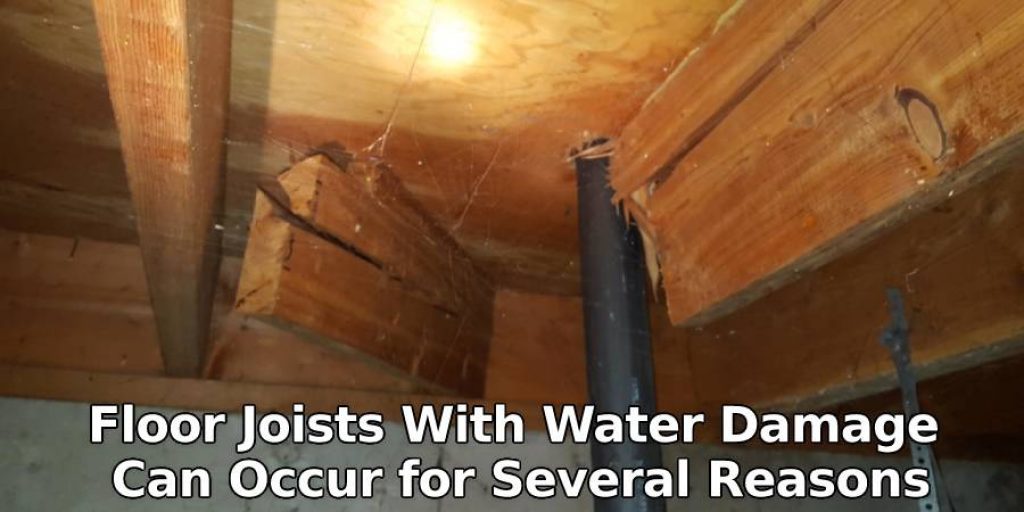
What Are the Symptoms of Water-Damaged Floor Joists?
A house with a wet floor joist will generally be structurally unsound and may collapse, especially if water is involved. If you suspect your floor joists have been damaged due to water, you will probably see evidence of warped and/or cracked floor joists and subflooring, as well as discoloration from mold or mildew. You may also smell a musty odor.
Frequently Asked Question
How Much Does It Cost to Repair Floor Joists?
The cost of repairing floor joists can vary depending on the size and type of damage that is present. A typical average price for a small house is around $3,000.
What Happens when Floor Joists Get Wet?
When floor joists get wet, the weight of the floors causes a lot of pressure on them. The drywall and plaster around them will crack and crumble.
The solution is to have your contractor remove all the drywall and plaster from the area where the floor joists are located, then replace it with new drywall and plaster before replacing the old joists.
How Long Does It Take to Repair Floor Joists?
Floor joists are one of the most important parts of a floor system. They are the foundation of the floor, and they are what gives it strength. If you have a broken or rotted floor joist, then you will need to replace it as soon as possible.
Replacing a rotted or broken floor joist takes time and effort because there is more than one party involved in this process. First, you need to remove all other materials from the area that will be replaced before proceeding with any repairs or replacements. Then, remove any old nails that may still be in place and fill any holes left by them with wood putty before proceeding further.
How Do I Know if My Floor Joists Are Bad?
Using a framing level is the best way to know if your floor joists are bad. If you cannot afford one, you can use your eye to make an estimate.
If the floor joists look bent or uneven, they are most likely bad and need replacing. The cause of this issue could be a previous flood, fire, or car accident. You should replace them as soon as possible, so the house doesn’t fall around you, and your family’s lives don’t get put in danger.
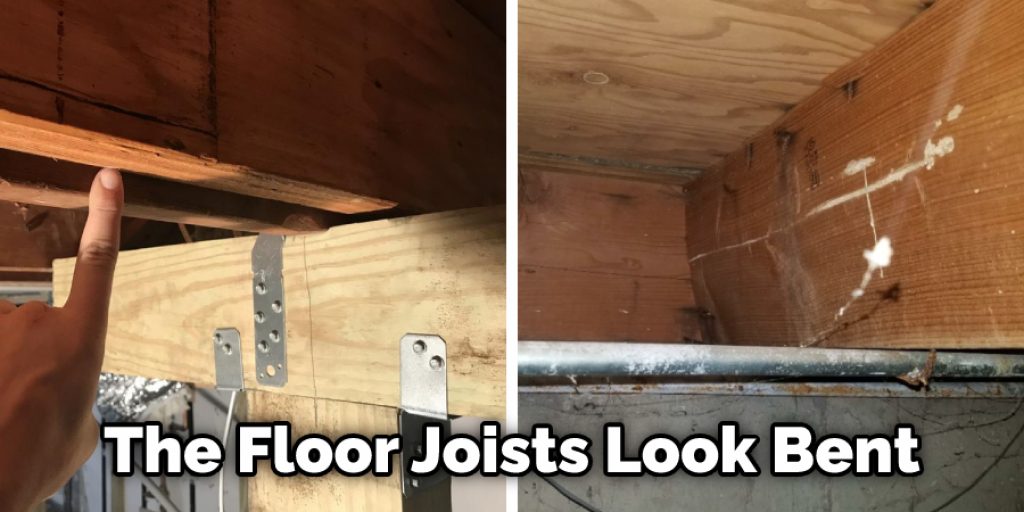
How Long Can Floor Joists Be without Support?
The length of floor joists can vary from 2′ to 8′. You should use a 2×6 or 2×8 as the supporting member. The reason for this is that they have a larger surface area, which makes them more stable.
A professional could provide a more accurate answer, but these are some of the reasons why it’s recommended that you use a 2×6 or 2×8 instead of just using floor joists without support.
Conclusion
In this blog, we’ve covered a few key points on how to repair floor joists with water damage. If you have any questions about the process or would like help with your project, feel free to reach out, and one of our experts can get in touch with you. We welcome all customers worldwide, so don’t hesitate to contact us today!








